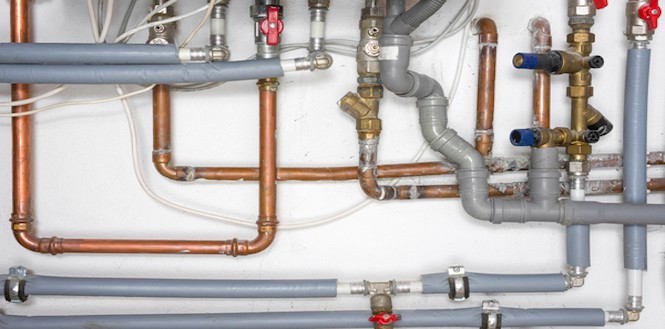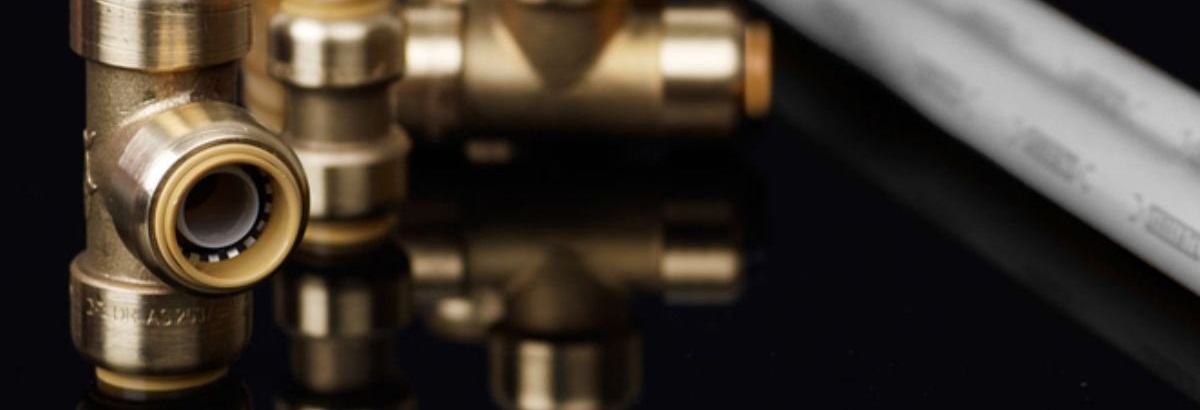Were you in search of suggestions about The Inner Workings of Your Home's Plumbing?

Understanding how your home's plumbing system functions is essential for every homeowner. From delivering clean water for drinking, cooking, and bathing to securely getting rid of wastewater, a properly maintained pipes system is essential for your family's health and convenience. In this thorough overview, we'll check out the elaborate network that comprises your home's plumbing and offer tips on maintenance, upgrades, and taking care of usual problems.
Intro
Your home's plumbing system is more than simply a network of pipelines; it's a complicated system that ensures you have accessibility to tidy water and reliable wastewater removal. Knowing its components and just how they work together can help you stop expensive repair work and ensure every little thing runs smoothly.
Fundamental Components of a Pipes System
Pipelines and Tubing
At the heart of your plumbing system are the pipes and tubing that bring water throughout your home. These can be made from various materials such as copper, PVC, or PEX, each with its benefits in regards to sturdiness and cost-effectiveness.
Fixtures: Sinks, Toilets, Showers, and so on.
Components like sinks, toilets, showers, and bath tubs are where water is used in your house. Comprehending just how these fixtures link to the pipes system assists in diagnosing problems and planning upgrades.
Shutoffs and Shut-off Factors
Valves regulate the circulation of water in your plumbing system. Shut-off shutoffs are important throughout emergency situations or when you need to make repair work, enabling you to separate parts of the system without interrupting water flow to the entire residence.
Water System System
Key Water Line
The primary water line connects your home to the community water or an exclusive well. It's where water enters your home and is distributed to different fixtures.
Water Meter and Stress Regulator
The water meter actions your water usage, while a stress regulatory authority makes sure that water streams at a safe pressure throughout your home's pipes system, avoiding damages to pipelines and fixtures.
Cold Water vs. Hot Water Lines
Comprehending the difference between cold water lines, which supply water straight from the major, and hot water lines, which lug warmed water from the hot water heater, aids in repairing and planning for upgrades.
Drain System
Drain Pipeline and Traps
Drain pipes carry wastewater far from sinks, showers, and commodes to the sewage system or septic system. Traps avoid sewage system gases from entering your home and additionally trap debris that might cause blockages.
Air flow Pipes
Air flow pipelines enable air into the drainage system, preventing suction that might slow water drainage and trigger catches to vacant. Correct ventilation is necessary for keeping the integrity of your plumbing system.
Value of Correct Water Drainage
Ensuring appropriate water drainage prevents backups and water damage. Routinely cleaning drains and preserving traps can stop expensive repair services and expand the life of your pipes system.
Water Furnace
Sorts Of Hot Water Heater
Hot water heater can be tankless or traditional tank-style. Tankless heaters heat water as needed, while containers save warmed water for prompt usage.
Just How Water Heaters Attach to the Plumbing System
Understanding how water heaters connect to both the cold water supply and hot water distribution lines aids in diagnosing issues like inadequate hot water or leakages.
Upkeep Tips for Water Heaters
On a regular basis purging your hot water heater to get rid of debris, inspecting the temperature setups, and evaluating for leaks can prolong its lifespan and improve power effectiveness.
Typical Pipes Problems
Leaks and Their Reasons
Leakages can take place as a result of aging pipes, loosened fittings, or high water stress. Attending to leakages quickly prevents water damage and mold development.
Obstructions and Obstructions
Obstructions in drains and commodes are typically caused by purging non-flushable things or a buildup of oil and hair. Utilizing drain displays and being mindful of what decreases your drains pipes can stop clogs.
Signs of Pipes Troubles to Watch For
Low water stress, slow-moving drains, foul odors, or uncommonly high water expenses are signs of possible plumbing issues that ought to be dealt with quickly.
Plumbing Maintenance Tips
Regular Assessments and Checks
Schedule annual pipes examinations to catch issues early. Seek indications of leakages, rust, or mineral buildup in faucets and showerheads.
DIY Maintenance Tasks
Basic jobs like cleaning tap aerators, looking for bathroom leakages making use of dye tablets, or protecting revealed pipelines in cold climates can protect against major pipes issues.
When to Call an Expert Plumbing
Know when a plumbing issue calls for specialist knowledge. Trying complex repair work without correct expertise can lead to more damages and greater repair service expenses.
Upgrading Your Pipes System
Factors for Upgrading
Updating to water-efficient fixtures or changing old pipes can improve water high quality, lower water expenses, and raise the worth of your home.
Modern Plumbing Technologies and Their Benefits
Check out innovations like clever leakage detectors, water-saving bathrooms, and energy-efficient hot water heater that can conserve cash and minimize environmental effect.
Cost Factors To Consider and ROI
Compute the ahead of time costs versus lasting financial savings when taking into consideration pipes upgrades. Many upgrades spend for themselves via minimized utility expenses and less fixings.
Ecological Impact and Preservation
Water-Saving Fixtures and Devices
Setting up low-flow faucets, showerheads, and toilets can considerably decrease water usage without compromising performance.
Tips for Minimizing Water Usage
Basic behaviors like taking care of leaks immediately, taking shorter showers, and running full lots of washing and recipes can conserve water and lower your utility expenses.
Eco-Friendly Pipes Options
Think about lasting pipes materials like bamboo for floor covering, which is durable and environment-friendly, or recycled glass for kitchen counters.
Emergency situation Readiness
Steps to Take During a Plumbing Emergency
Know where your shut-off valves lie and exactly how to turn off the water in case of a ruptured pipeline or major leak.
Importance of Having Emergency Calls Handy
Keep get in touch with information for local plumbing professionals or emergency situation services conveniently offered for fast action throughout a pipes crisis.
DIY Emergency Fixes (When Appropriate).
Short-term repairs like making use of duct tape to spot a leaking pipe or placing a pail under a trickling tap can minimize damages till a specialist plumbing professional shows up.
Final thought.
Recognizing the makeup of your home's plumbing system encourages you to preserve it properly, conserving time and money on repair work. By following normal maintenance regimens and staying informed concerning modern pipes innovations, you can guarantee your pipes system runs successfully for many years ahead.
HOW YOUR PLUMBING SYSTEM WORKS
Which Pipes Do What?
Blue lines = fresh water supply entering the building
Red lines = hot water supply entering the building
Grey lines = pipes carrying waste away from the building and venting pipes carrying gases away from the building (through the roof)
YOUR MAIN PLUMBING SYSTEMS
There are two main plumbing systems that support your home s basic plumbing needs one that brings clean water into your home, and one that sends dirty water away from your home. Connected to the toilet, bath, shower, and other faucets in your home, these two systems keep your water flowing in the right directions.
ACCESSING FRESH WATER
Fresh and clean water is brought into your home through the main water supply line . Filtered through one pipe, this water is pressured to flow into the various fixtures in your home at any given time.
This water can be sourced from a well located on your property, a pond or river (mostly cottages), or, as in most cases, from the city s municipal water treatment centre. However, it is important to note that water that is untreated, such as the water siphoned from ponds or rivers, may not be safe to drink. Personal water supplies always need to be treated for hardness and contaminants before consumed.
MUNICIPAL WATER SUPPLIES
Improve taste and odour
Remove sediment
Eliminate hardness
Reduce chlorine
COLD WATER SUPPLY VS. HOT WATER SUPPLY
Cold water flows into your home or building through the service line, which then distributes hot or cold water to your fixtures. This line is most commonly run through a central column that runs floor to floor. Hot water runs in short and straight pipes as the longer the pipeline, the more heat that will be lost in the transfer. Having shorter pipes also allows residents to access hot water more quickly.
WASTE WATER SYSTEM
Your wastewater system is divided into two parts pipes that send wastewater away from your home and venting pipes that send sewer gas away from your home. Sewage water travels through pipes that flush the water and waste towards local sewers that are operated and managed by your city or town. Most sewer systems rely on gravity to move the wastewater to where it needs to go.
The further away from your toilet or sink, the larger wastewater pipes become. This allows for waste to be disposed of from various parts of your home or business at once without pipe blockages. The angle and flow of these pipes are also essential for keeping your waste pipes clear of build up.
https://harrisplumbing.ca/how-your-home-plumbing-system-works/

HOW YOUR PLUMBING SYSTEM WORKS
Which Pipes Do What?
YOUR MAIN PLUMBING SYSTEMS
There are two main plumbing systems that support your home s basic plumbing needs one that brings clean water into your home, and one that sends dirty water away from your home. Connected to the toilet, bath, shower, and other faucets in your home, these two systems keep your water flowing in the right directions.
ACCESSING FRESH WATER
Fresh and clean water is brought into your home through the main water supply line . Filtered through one pipe, this water is pressured to flow into the various fixtures in your home at any given time.
This water can be sourced from a well located on your property, a pond or river (mostly cottages), or, as in most cases, from the city s municipal water treatment centre. However, it is important to note that water that is untreated, such as the water siphoned from ponds or rivers, may not be safe to drink. Personal water supplies always need to be treated for hardness and contaminants before consumed.
MUNICIPAL WATER SUPPLIES
COLD WATER SUPPLY VS. HOT WATER SUPPLY
Cold water flows into your home or building through the service line, which then distributes hot or cold water to your fixtures. This line is most commonly run through a central column that runs floor to floor. Hot water runs in short and straight pipes as the longer the pipeline, the more heat that will be lost in the transfer. Having shorter pipes also allows residents to access hot water more quickly.
WASTE WATER SYSTEM
Your wastewater system is divided into two parts pipes that send wastewater away from your home and venting pipes that send sewer gas away from your home. Sewage water travels through pipes that flush the water and waste towards local sewers that are operated and managed by your city or town. Most sewer systems rely on gravity to move the wastewater to where it needs to go.
The further away from your toilet or sink, the larger wastewater pipes become. This allows for waste to be disposed of from various parts of your home or business at once without pipe blockages. The angle and flow of these pipes are also essential for keeping your waste pipes clear of build up.
https://harrisplumbing.ca/how-your-home-plumbing-system-works/
We had been shown that editorial on through a friend on our other blog. Are you aware of somebody who is serious about the niche? Be sure share it. I praise you for your time. Please visit our website back soon.
Call Today